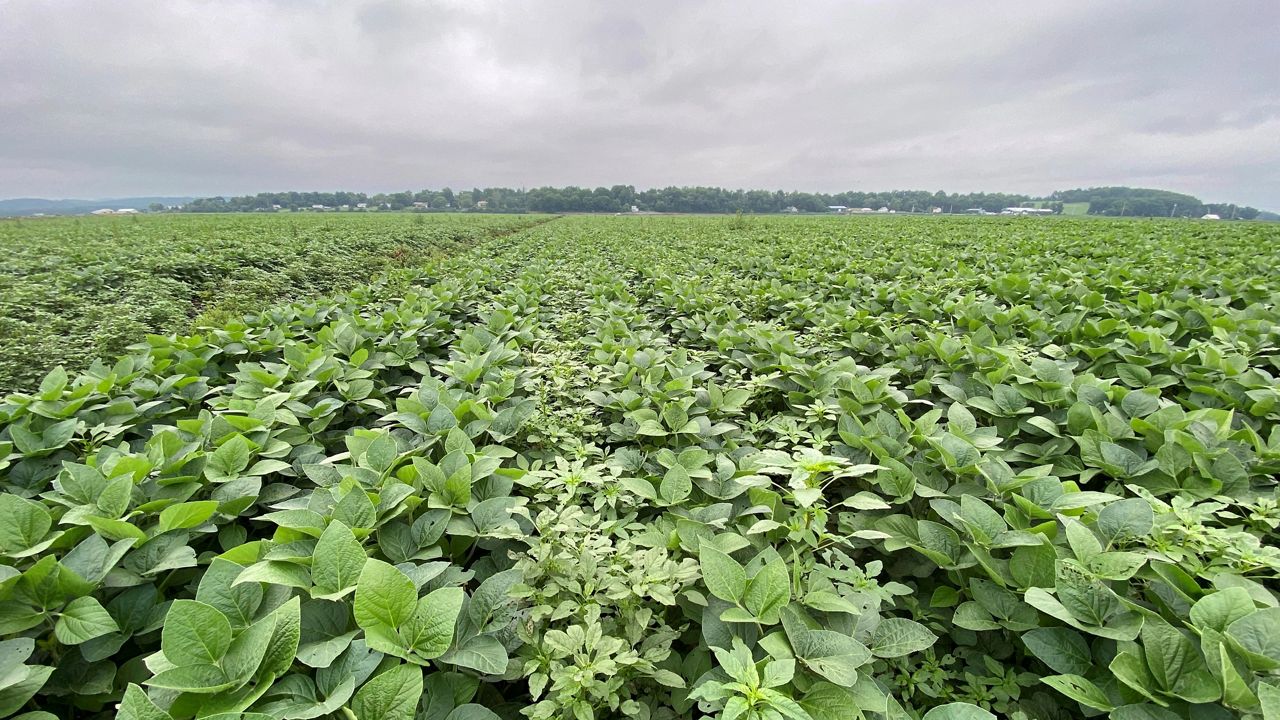New York corn and soybean growers are seeing a new weed species in their fields, leading to increased concern among researchers.
“It’s invasive because it’s invading our area, but it is actually native to North America. It’s native to the southwestern United States,” said Lynn Sosnoskie, a professor of weed ecology and management at Cornell University.
Palmer amaranth is a desert species sometimes called pigweed, which has been able to grow in different environments. Its ideal climate is warm, but as climate change continues to bring higher temperatures to New York, the weed has been able to grow here.
One of the big causes for concern is the weed is showing resistance to a variety of different herbicides, Sosnoskie said.
“We documented resistance to glyphosate, which goes under the trade name Roundup. We’ve found resistance to Atrazine, which is a commonly used corn herbicide as well,” she said.
In addition to this resistance, each plant produces many seeds allowing it to rapidly spread.
“Anywhere from tens of thousands to hundreds of thousands, and a very large female plant growing under optimum conditions have been reported as even producing a million seeds per plant,” Sosnoskie said.
With the possibility to grow up to an inch per day, the plant can grow to more htan 10 feet tall and quickly overtake soybeans and corn in a field.
“You have lots and lots of plants competing with the crop so that competition with the crop for water, nutrients and the shared resources, that means there’s less that the crop can take up because the weeds are capturing it,” Sosnoskie said.
It is not widespread through specialty crops yet, but it has been seen in Orange County, she said.
“That is one of my biggest concerns is that it can [grow among specialty crops], especially if we have specialty crops that are rotating with corn and soybeans,” she said.
David DeGolyer, a consultant for the Western New York Crop Management Association, said they have been seeing Palmer amaranth pop up in fields in western and central New York.
“We’re trying to prepare for it as best we can. It’s not widespread in New York quite yet versus other states,” DeGolyer said.
Rotating fields with different crops such as wheat and alfalfa has helped reduce the amount of Palmer amaranth in fields.
Row crops give the weed more space to grow versus wheat, alfalfa (hay) and other cover crops that provide a canopy over the entire field. Additionally, DeGolyer said doing two spray applications has been another approach that has seen success.
“I don’t want to see it spread any further. It would be a really devastating weed if we’re not careful about it,” he said.



